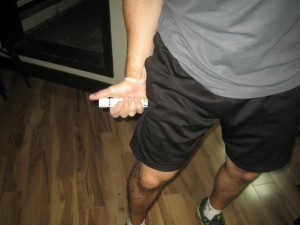Food allergies are triggered by an overactive immune system. You have to bear in mind that certain ingredients in some foods contain proteins that is interpreted by the immune system as a threat. As a way to protect the body, the immune system releases antibodies to fight them off. Once these antibodies sense the protein, it will signal the release of histamine and other chemicals into the bloodstream, resulting to the manifestation of the allergy symptoms. The common symptom of food allergy is hives which are described as the itchy patches of swollen skin that can occur right after exposure to the allergen.
http://youtu.be/J1CFc1L3yi8
Common types of food allergies
Shellfish allergy
Allergy to shellfish can range from a single type of shellfish or to all types. Shellfish allergy includes marine animals that have shells such as crabs, lobsters and shrimps but can also include creatures that do not have shells such as squid and octopus. Aside from hives, gastrointestinal issues and swelling can develop after eating shellfish.
Peanut allergy

Peanut allergies can range in terms of severity from mild to life-threatening. Allergies to peanuts can occur in various ways – cross-contact, direct contact and inhalation. Direct contact is actually touching or swallowing the peanut. Cross-contact takes place if the individual is allergic to peanut and gets in contact with an item or surface the peanut was exposed to. Skin reactions such as hives can occur right after exposure as well as digestive issues and respiratory problems.
Egg allergy
During an egg allergy, hives is the most common allergic reaction and the symptoms can take up to a few hours to manifest right after an exposure. Other symptoms include gastrointestinal problems such as vomiting, cramps and nasal inflammation. In most cases, allergic asthma can also occur in which the chest tightens, thus making breathing difficult.
When anaphylaxis develops
Anaphylaxis typically involves several body systems that can be mild, severe or even fatal. The initial signs of an anaphylactic reaction usually includes warm or flushed feeling, red and itchy rashes or hives and tingling in the mouth. The additional symptoms include shortness of breath, lightheadedness, anxiety, severe sneezing, vomiting, stomach cramps and diarrhea. In some cases, low blood pressure, airway constriction, rapid pulse, dizziness and loss of consciousness can also occur. Always remember that a drastic drop in the blood pressure can result to an anaphylactic shock.
An injection of epinephrine is given right away once the early signs of an anaphylactic shock occur. The shot is given on the thigh and can help counteract the symptoms of the reaction until medical care can be provided.
The symptoms of an anaphylactic shock can occur minutes to several hours after ingesting the allergen. In most cases, the symptoms appear right away after consuming the food and would require immediate emergency care.
